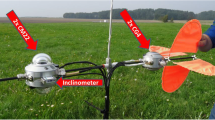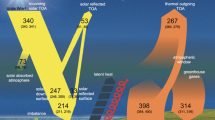Summary
¶The Alpine Surface Radiation Budget (ASRB) project was initiated in 1994 to investigate the altitude dependence of the surface radiation budget with a particular focus on accurate measurements of the longwave downward radiation. Meanwhile broadband short- and longwave radiation fluxes are continuously measured within this network at eleven stations between 370 and 3580 m a.s.l. in the Swiss Alps. New calibration techniques, modified pyrgeometers and an adequate ventilation and heating system decreased the uncertainty for longwave radiation measurements even under harsh alpine weather conditions to about ±3 W m−2.
Four years of continuous measurements of short- and longwave radiation fluxes at the ASRB stations were examined. A clear-sky climatology was determined for each station. Yearly cycles, seasonal and annual mean values and altitude gradients were analyzed for the individual radiation fluxes. Net fluxes and the surface cloud forcing was calculated for all stations. Annual mean values of global radiation demonstrate an altitude gradient of 1.3 W m−2/100 m, where as the summer gradient at stations below 2000 m a.s.l. is slightly negative due to the convective clouds at the lower mountain stations. At stations above 2800 m the vertical gradient is positive due to the multiple reflection between the clouds and the often snow covered high-alpine surrounding. Annual mean net shortwave radiation was found to be almost constant (80 W m−2) throughout the alpine stations due to the counterbalancing effect of the albedo. Longwave downward radiation fluxes show an almost linear decrease of 2.9 W m−2/100 m altitude for annual mean values. Annual mean net radiation ranges from 50 W m−2 at lower stations to almost zero (but still positive) at high altitude stations. The analysis of the cloud forcing and its seasonal influence revealed that clouds have a warming effect in the Alps (i.e. above 1500 m a.s.l.), which is maximum during the winter month (ca. 40 W m−2).
Similar content being viewed by others
Author information
Authors and Affiliations
Additional information
Received April 19, 2001; Revised January 21, 2002
Rights and permissions
About this article
Cite this article
Marty, C., Philipona, R., Fröhlich, C. et al. Altitude dependence of surface radiation fluxes and cloud forcing in the alps: results from the alpine surface radiation budget network. Theor. Appl. Climatol. 72, 137–155 (2002). https://doi.org/10.1007/s007040200019
Issue Date:
DOI: https://doi.org/10.1007/s007040200019




